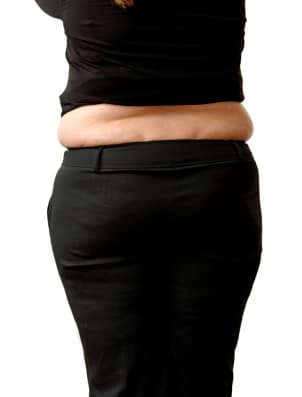 One telltale sign that you may be suffering from declining hormone levels is a gain in weight in the form of fat. Even those of us who maintain a regular exercise program and continue with the same nutrition program as we did when we were younger invariably gain fat as we age. But, why? Declining hormone levels.
One telltale sign that you may be suffering from declining hormone levels is a gain in weight in the form of fat. Even those of us who maintain a regular exercise program and continue with the same nutrition program as we did when we were younger invariably gain fat as we age. But, why? Declining hormone levels.
Well, what happens as we age? A vast majority of our hormones, hormones that regulate hundreds of bodily functions and biochemical reactions, decline as we age. The decline is subtle and usually begins in our 30s.
At that stage, many of us can overcome those declining sex hormone levels by exercising more and being more selective with what we eat. But, at some point, usually in our mid-40s the decline in hormones is too steep, and we can no longer overcome the changes that come with those declines. One of those changes is fat gain.
Declining Hormone Levels and Fat Gain
Many of our hormones directly and indirectly affect metabolism. These hormones include the sex hormones – estrogen and progesterone in females, and testosterone in males (in reality all 3 are made by men and women). Other hormones that affect whether we gain fat or not include growth hormone, DHEA (similar to testosterone), and thyroid hormone.
Hormones also affect how we store and use energy for future use. Energy comes in the form of calories. Hormones essentially tell our bodies how to use the calories stored in our body and found flowing through our bloodstream in the form of glucose.
There are 2 critical enzymes that direct the body to either store calories in our fat tissues or burn calories from our fat stores. These 2 enzymes are called lipoprotein lipase (LPL) and hormone-sensitive lipase (HSL).
LPL and HSL
When “turned on” LPL pulls calories into our fat tissue. LPL found on fat cells is “turned on” by insulin and insulin is largely secreted in response to carbohydrates especially simple sugars. So consumption of sugar and excessive carbohydrates contributes to fat gain. Estrogen and testosterone inhibit LPL function.
So as estrogen and testosterone levels decline LPL is more active promoting fat gain. So estrogen and testosterone put the brakes on LPL activity – a good thing. Capisci? LPL activity also decreases with exercise, and that enables us to burn calories from fat as long as insulin levels are not too high.
HSL makes fat cells leaner. It facilitates the release of fatty acids in fat cells into the bloodstream where these fatty acids can be burned for energy in other cells. But, insulin inhibits HSL function preventing this release of fats to be burned for energy. So insulin stimulates LPL activity which leads to fat gain, and inhibits HSL activity preventing the burning of fat for energy – the ultimate double whammy. Insulin is bad for fat gain.
Sex Hormones and Fat Distribution in Men and Women
Men have more LPL on fat cells in the abdomen and women have more LPL on fat cells in the hip and rear. So when testosterone levels decline in men they put weight on in the belly, and when estrogen declines in women they put weight on in the hips and bottom.
So while avoiding overeating carbohydrates is critical to avoid becoming fat, having optimal sex hormone levels is also important. Individuals with optimal levels of growth hormone, DHEA, and thyroid are also better able to maintain a healthy body composition. In our practice, we try to optimize all these hormones through diet, exercise, and actual replacement when indicated.
To prevent fat gain with age be sure to consume low glycemic foods and optimize your hormones if you suffer from declining hormone levels.
See related articles.
“Side Effects of Hormone Replacement Therapy in Men and Women”
